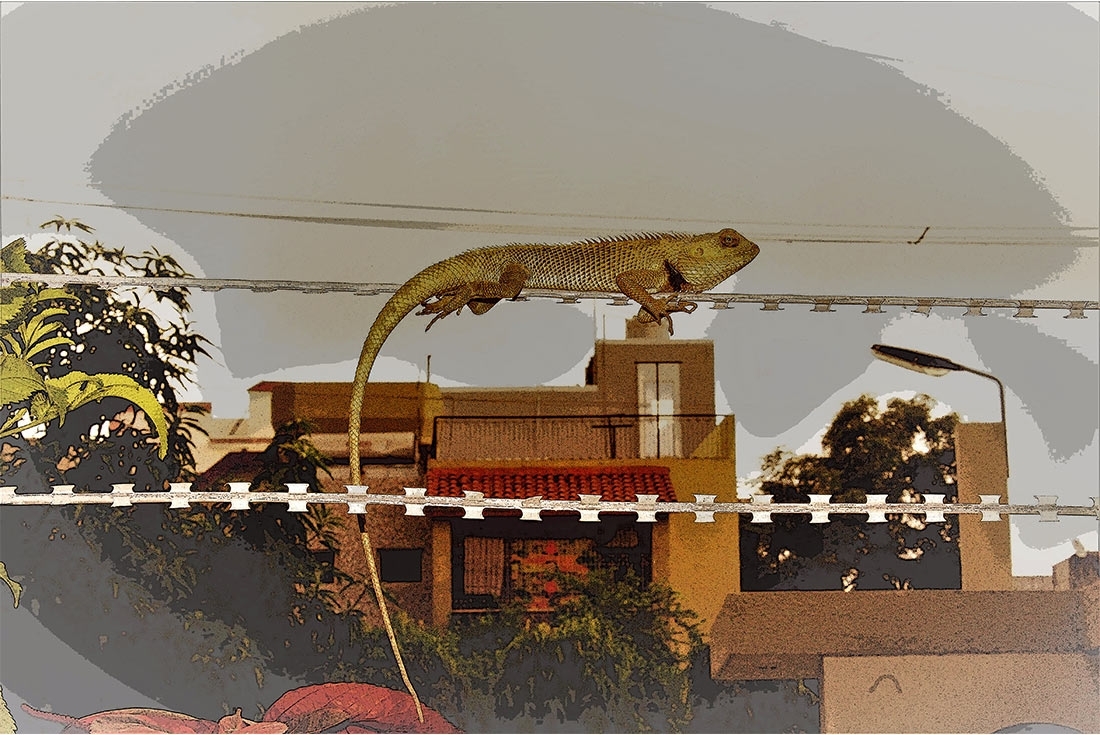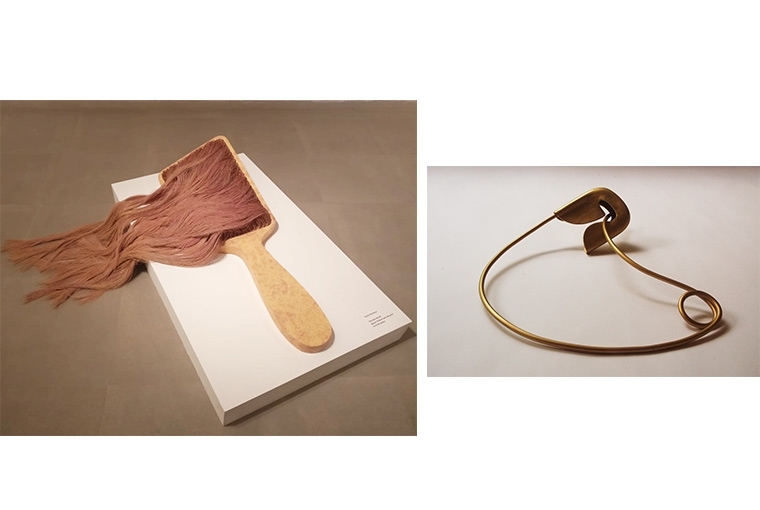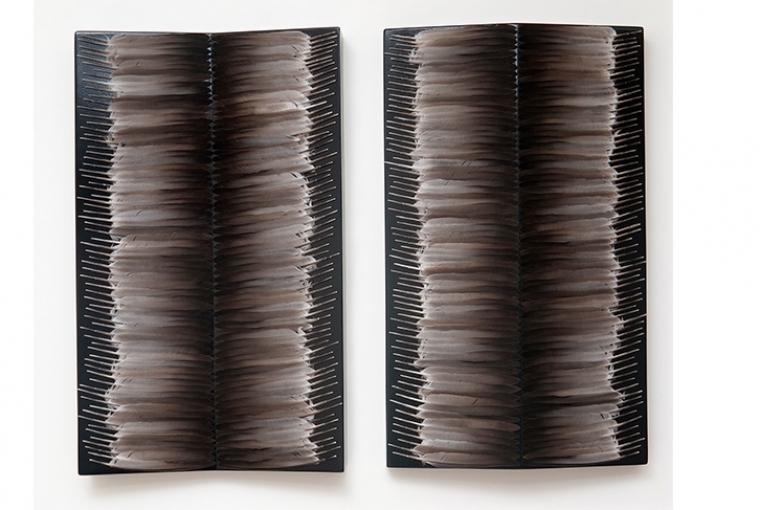
Urban Lizard , Kruti Thaker

Urban Lizard , Kruti Thaker
Vocabularies, an art show curated by Anupa Mehta, showcasing works by three young women artists is being held at Gallery Art Positive in Delhi. Each of these artists communicate what they want to in a distinctively unique manner, breaking away from traditional art mediums. While the show encompassses artworks crafted in array of materials such as metal, fabric, feather and thread, each artwork manages to reflect the concept and depth that the artist intended to endow it with.
Kruti Thaker
Kruti Thaker is a Vadodara based artist, whose work fuses her ordinary surroundings and her vivid imagination, creating surreal realities. For instance, one of her artworks called Urban Lizard shows a life sized lizard sitting atop an electrical wire watching the city beneath it, ‘That particular lizard roams around in my garden. I have been living in Vadodara for the past 15 years. Here there is a lot of greenery as well as infrastructure. So it’s all in one place, where nature and manmade elements are trying to make space for themselves. In my painting, the lizard sits atop a wire watching the city, as everyone in it tries carve a little space for themselves’. She would also imagine, on looking at the wheel of a pizza cutter the wheel of a vehicle and this would further spring her to imagine the scenario of a pizza cutter moving on the road just like the wheels of a vehicle. Her two dimensional artworks also feature embroidery and patchwork. Embroidery is a craft she has been connected to since childhood, though she incorporated it in her work only after a brief encounter she had with the artist Atul Dodiya, which got her thinking about the personal significance of her choice of material. Atul used a material which held personal significance to him, marble. For Kruti, she then knew instantly, that it was going to be embroidery.

Shaila Nambiar
Shaila Nambiar
With the culmination of her two degrees, one in painting and one in Textile Design respectively from MSU and NID, she channels the sum of her learnings very effectively in her work by giving life to inanimate objects. A deformed hairbrush, a safety pin and a nail cutting scissor bent out of shape, these are all silent rebellions against a much louder norm in our society held towards women. With the coming of age popularisation of beauty ideals through social and mass media, women are, very silently behind their mirrors, behind their selfie cameras made to question their own beauty. Not just are they beautiful, but are they beautiful in the context of today’s seemingly unattainable beauty ideals? Shaila hits home with a point that effortlessly sums up this scenario, ‘While the notion of beauty gets emphasized through social media, younger girls are becoming more conscious of how they look. I feel that women are always more affected by this, since they have always been objectified. They have always been a source of object, so what happens to those who are not beautiful? They must be feeling horrible. There is so much of mental pressure. I want to discard all of that.’ She goes on to tell me about her work, which in a very mysterious yet haunting manner speaks volumes about her intention, ‘My work is lighter take on this issue. it is a humorous take, these are the objects that women use on a day to day basis. They are deformed in my work, they are in a mode of protest, they have decided to not be what people tell them to be. Like, you have an image in your head that the safety pin is supposed to be safe but it has decided not to be. It is actually a way of saying no, it is rebelling while simultaneously symbolizing that imperfection is okay.’

Flight, Sarika Bajaj
Sarika Bajaj
Sarika Bajaj uses naturally discarded feathers of pigeons and crows in her artworks. She goes to the extent of painfully sourcing them from intersections in Mumbai where these birds gather, further cleaning them and arranging them according to size even before she can begin a work.
What started as an initial fascination with feathers due to their aesthetic beauty has over the years evolved to hold deep spiritual significance. Birds are considered as sacred in shamanic lore and are known to have healing energies. Sarika has been known to explore the mystery of life, unseen forces and even death and decay in her artwork. On asking her about her roots with spirituality she says, ‘In a country where we live you are constantly exposed to various rituals, even as a child you see these rituals, so subconsciously, I feel they have always been a part of me, and also, I think it is my personality. I have always been very spiritually inclined.’ Her latest works see the incorporation of other sacred materials such as the colours red and black as well as threads and ropes. Though is there a larger message behind her artworks? ‘I have come across a lot of people who consider birds as pests. Honestly I have never looked at them that way, as a child I would feed them.I hope in some way I can change the perception of people towards birds through my work.’ She tells me, as her artworks continue to immortalise the spirit of these birds as spiritual symbols.
Text Supriya Jain